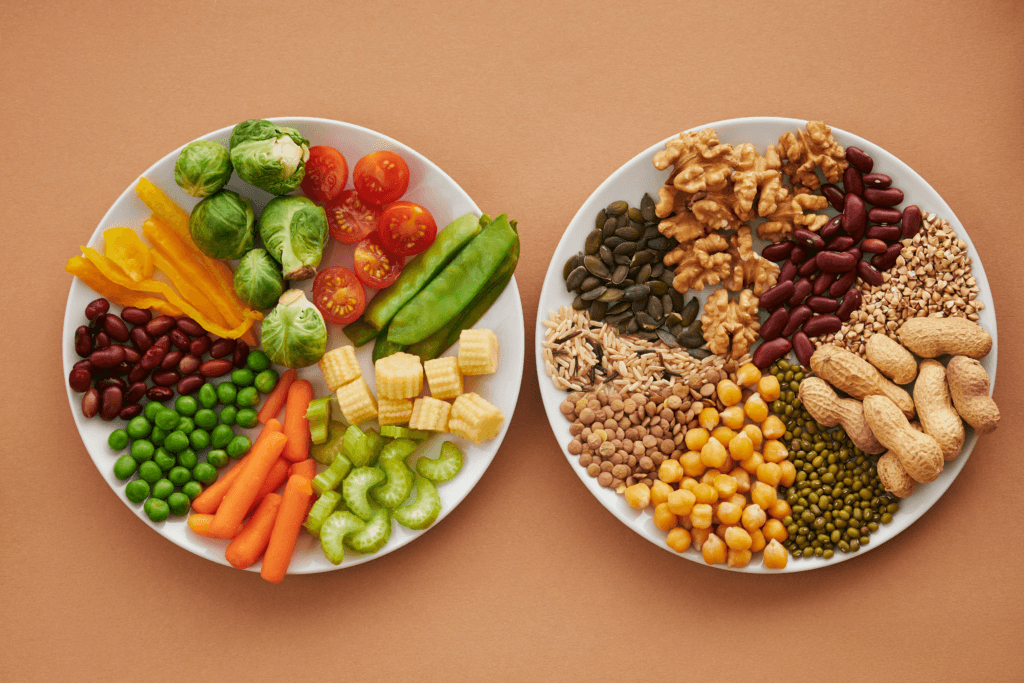The plant-based protein industry is experiencing a surge of innovation, driven by growing consumer demand for sustainable, healthy, and ethical food options. As we look towards 2025 and beyond, several exciting trends are shaping the landscape of plant-based proteins.

Table of Contents
Expansion of Protein Sources
The market is no longer limited to soy and pea proteins. Innovators are now tapping into a diverse array of plant-based protein options:
- Legumes: Chickpeas, lentils, and fava beans are gaining popularity due to their versatility and rich nutritional content.
- Nuts and Seeds: Walnuts, hazelnuts, and sunflower seeds are being utilized to create creamy, plant-based milk alternatives.
- Emerging Sources: Mycoprotein (fungi-based) and algae are being explored as sustainable protein solutions.

This broadening of protein choices not only enhances consumer options but also contributes to a more resilient and sustainable food system.
Advancements in Protein Extraction and Processing
Technological innovations are improving the quality and functionality of plant-based proteins:
- Precision Fermentation: This technique allows for the creation of animal-free dairy proteins, opening up new possibilities for plant-based cheese and yogurt.
- Improved Extraction Methods: New processes are being developed to create protein concentrates and isolates with better taste, texture, and nutritional profiles.
These advancements are crucial in creating plant-based products that can truly rival their animal-based counterparts in taste and texture.
Focus on Clean Labels and Minimal Processing
As consumers become more health-conscious, there’s a growing demand for clean-label plant-based products:
- Whole Food Ingredients: Brands are moving away from highly processed ingredients, focusing instead on recognizable, whole food components.
- Reduced Additives: There’s a push to create products with fewer additives and preservatives, appealing to health-conscious consumers.
This trend aligns with the growing concern over ultra-processed foods and the desire for more natural, minimally processed options.
If you want to learn more about the crucial role of healthy eating in preventing chronic conditions, check out our blog, “The Importance of Healthy Eating: A Comprehensive Guide.” It provides valuable insights into how balanced food choices can promote long-term health and well-being, which is especially important for individuals recovering from or at risk of eating disorders.
HealthyBiteLab
Environmental Impact and Sustainability
Plant-based proteins are increasingly recognized for their positive environmental impact:
- Reduced Emissions: Plant-based meat alternatives can reduce greenhouse gas emissions by 30-52% compared to animal-based products.
- Water Conservation: The production of plant-based proteins uses significantly less water than traditional animal agriculture.
- Land Use Efficiency: Plant-based protein production requires 20-45% less land than animal-based protein production.
These environmental benefits are becoming a key selling point for plant-based products, appealing to eco-conscious consumers.
Innovative Product Applications

The plant-based protein market is expanding beyond traditional meat and dairy alternatives:
- Functional Foods: Plant proteins are being incorporated into snacks, beverages, and even desserts for added nutritional value.
- Hybrid Products: Some companies are exploring combinations of plant-based and cultivated meat technologies to create novel products.
This expansion into new product categories is helping to mainstream plant-based proteins and make them more accessible to a wider range of consumers.
Challenges and Future Outlook
Despite the rapid growth of the plant-based protein industry, several challenges remain:
- Taste and Texture: Ongoing innovation is essential to enhance the sensory appeal of plant-based products.
- Nutritional Comparability: Ensuring that plant-based proteins match the nutritional value of animal-based counterparts remains a key focus.
- Cost Competitiveness: Bridging the price gap with conventional animal products is critical for broader market adoption.
As these challenges are addressed, the industry is poised for even greater advancements. The future of plant-based proteins looks promising, with continuous improvements in flavor, nutrition, and sustainability. As more consumers embrace plant-based diets for health, ethical, and environmental reasons, this sector is set to experience sustained growth and innovation.
Frequently Asked Questions (FAQs)
1. In what ways are plant-based proteins transforming the food industry?
Innovations in plant-based proteins are improving their nutritional content, taste, and sustainability. Cutting-edge techniques such as precision fermentation, extrusion cooking, and cellular agriculture are helping to refine textures, flavors, and protein quality, making plant-based foods a highly competitive alternative to conventional animal products.
2. What are some groundbreaking advancements in plant-based protein development?
Recent innovations in plant-based protein technology include:
- Fermented plant proteins that enhance digestibility and flavor.
- 3D-printed plant-based meats that replicate real meat textures.
- Mycelium-based proteins derived from fungi, offering rich protein and fiber.
- Algae and insect-based protein blends, which provide sustainable nutrition.
3. What are some excellent sources of plant protein?
There are numerous high-protein plant foods, including:
- Legumes (chickpeas, lentils, black beans)
- Nuts and seeds (almonds, flaxseeds, chia seeds, hemp seeds)
- Grains (quinoa, oats, brown rice)
- Soy products (tofu, tempeh, edamame)
- Plant-based protein powders (pea, hemp, and soy protein)
